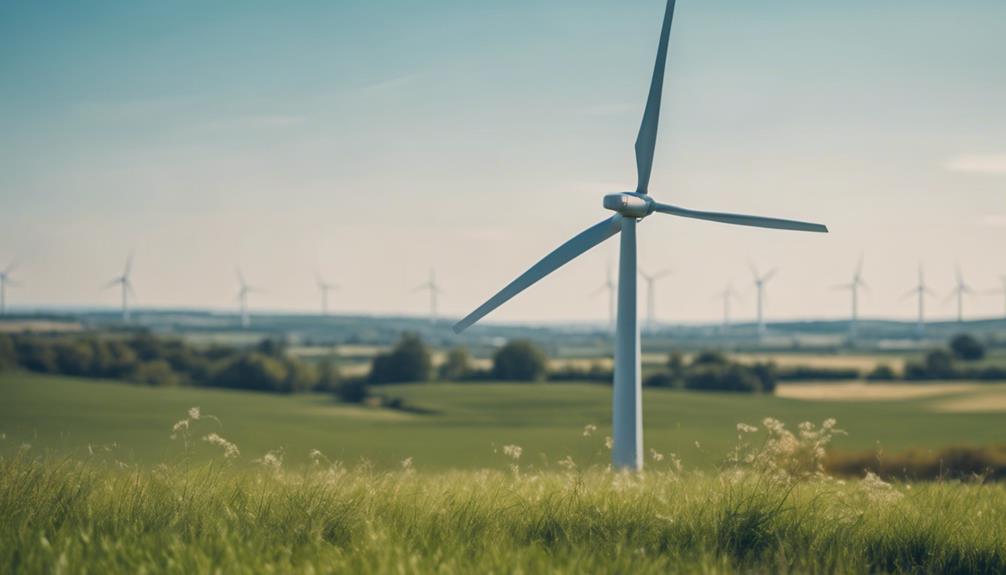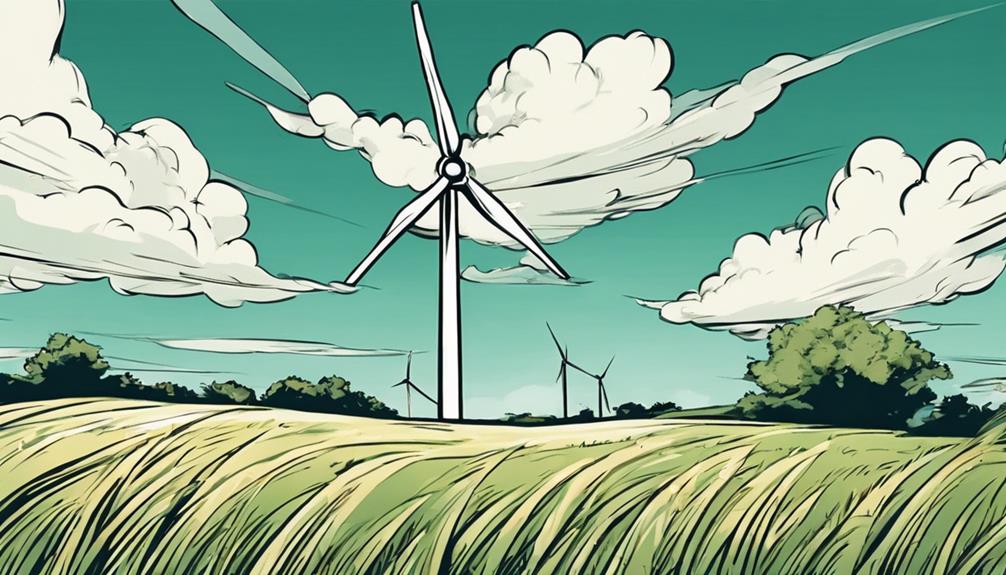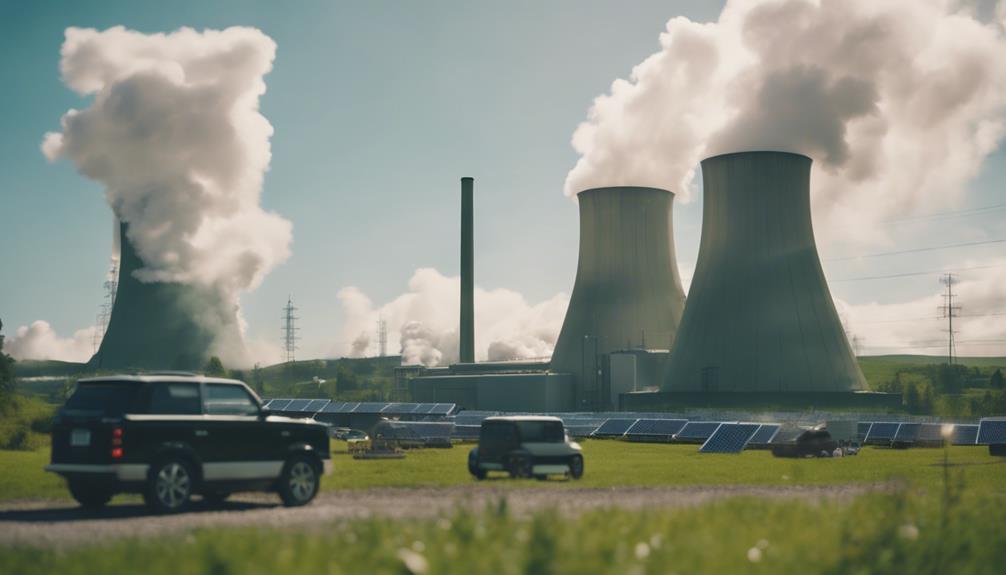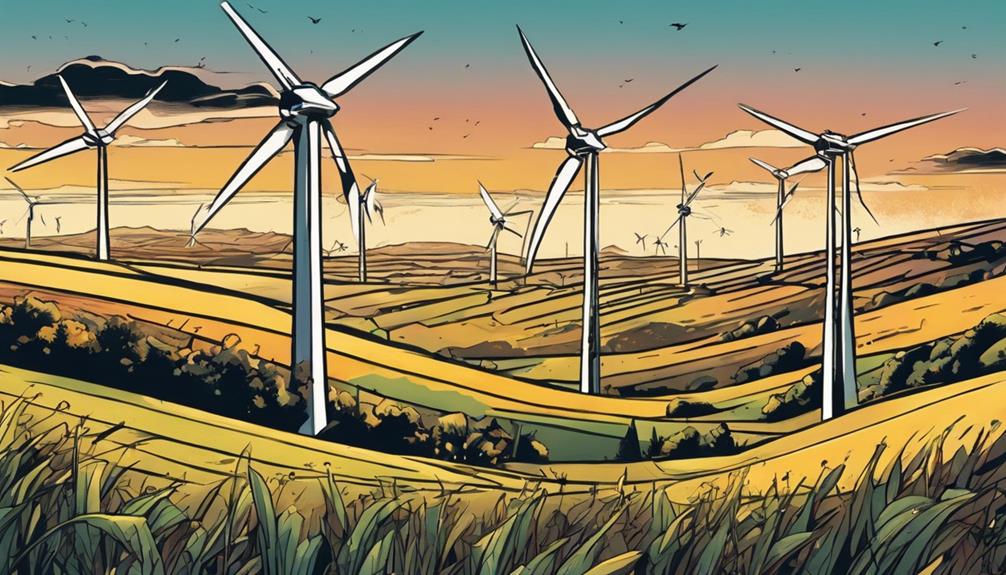A wind turbine spins around 25,200 times daily, showing its efficiency in utilizing wind power. It rotates due to wind speed and turbine design, impacting energy output. The higher the wind speed, the more spins and energy generated. Conversely, slower winds mean fewer rotations, affecting energy production. The frequency of spins determines the efficiency of energy generation.
Key Takeaways
- Wind turbines spin around 25,200 times daily on average.
- Rotational speed typically ranges from 15 to 20 rpm.
- Blade design, wind conditions, and turbine size affect daily spins.
- Higher wind speeds lead to more rotations and energy output.
- Monitoring rotational speed enhances energy generation efficiency.
Wind Turbine Operation Basics
To understand wind turbine operation basics, it's important to know how many times a wind turbine typically spins per day. Wind turbines usually rotate around 25,200 times daily, with the rotational speed of their blades ranging from 15 to 20 rpm. These daily rotations aren't fixed but vary based on wind conditions and the design of the turbine.
Influenced by wind speeds, the rotation of turbine blades directly impacts energy production. Higher wind speeds can lead to an increase in rotations, thereby boosting energy output. Conversely, low wind speeds may result in fewer rotations, affecting energy generation.
Understanding the relationship between daily rotations, wind conditions, and energy production is essential for evaluating the efficiency of wind turbines and gauging their overall performance.
Calculating Daily Rotations
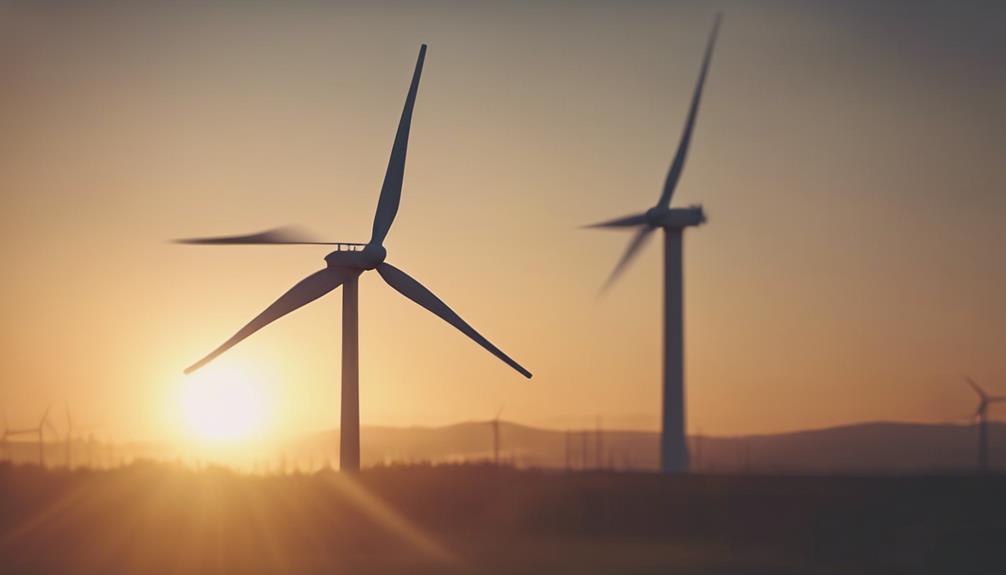
When determining the daily rotations of a wind turbine, it's important to take into account factors like daily rotational speed, turbine blade rotations, and the impact of wind conditions.
These elements play a significant role in how many times a turbine spins in a day and ultimately affect its energy generation efficiency.
Daily Rotational Speed
Calculating the daily turns of a wind turbine involves determining the total number of spins it completes within a 24-hour period. The rotational velocity of a turbine, which averages around 17.5 revolutions per minute (rpm), directly influences the number of daily turns. Factors like wind speed, turbine design, and operational controls play a significant role in dictating the daily rotational speed of the turbine.
On average, a typical wind turbine completes approximately 25,200 turns in a single day. This consistent spinning motion is vital for generating electricity efficiently.
Understanding the daily rotational speed is crucial for evaluating the performance and sustainability of wind energy production. By monitoring and optimizing the rotational speed, operators can enhance the turbine's energy output and overall effectiveness in harnessing wind power.
The daily turns serve as a fundamental metric for evaluating the operational success and longevity of wind turbines in generating clean and renewable energy.
Turbine Blade Rotations
The number of rotations a wind turbine blade completes each day directly impacts its energy output and efficiency. Blades rotating at 15 to 20 revolutions per minute contribute to the overall performance of the turbine.
Here are some key points to take into account:
- Wind speed affects the rotational speed of the blades, influencing the number of rotations per day.
- Turbine design plays a pivotal role in determining the best revolutions per minute for efficient power generation.
- Operational controls can adjust the rotational speed of the blades to enhance energy production based on varying wind conditions.
- Daily rotations are vital in gauging the effectiveness of the turbine in converting wind energy into electricity.
With an average rotational speed of 17.5 revolutions per minute, wind turbines achieve around 25,200 rotations each day, showcasing their ability to harness wind power effectively.
Impact of Wind
To gauge the impact of wind on the daily rotations of a wind turbine, consider the average rotational speed of 17.5 rpm and the resulting 25,200 rotations per day.
The interaction between wind speed and turbine design greatly influences the energy generation capacity of a wind turbine. Turbines are engineered to operate efficiently within a specific range of wind speeds, typically between 15 to 20 rpm, ensuring effective electricity production.
Variations in wind speed can directly affect the rotational speed of the turbine blades, thereby impacting the number of daily rotations. By adapting to changing wind conditions through operational controls, wind turbines can maximize their energy output and rotational efficiency.
Understanding the complex relationship between wind speed, turbine design, and energy generation is essential for enhancing the performance and sustainability of wind energy systems.
Factors Influencing Turbine Speed
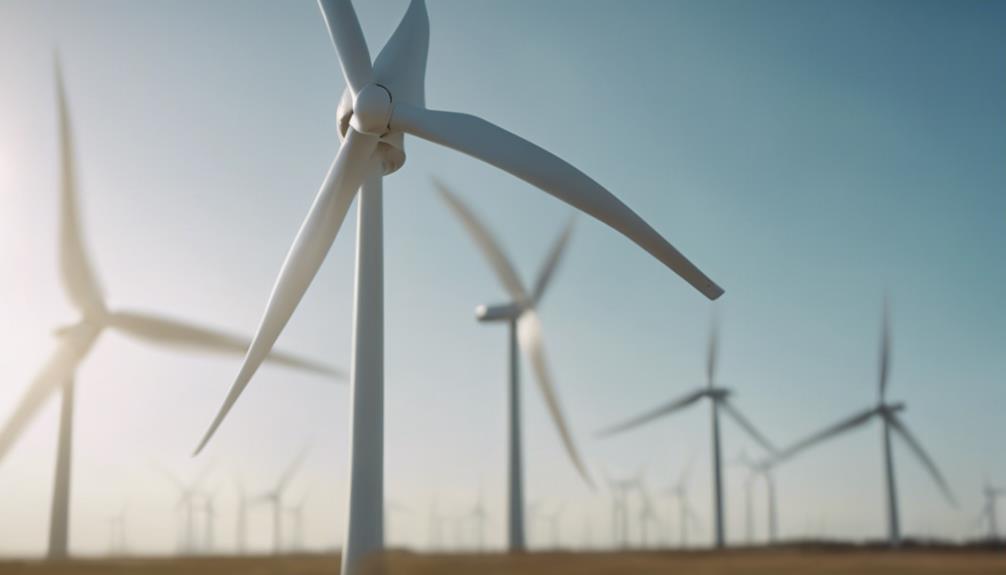
Factors that influence the speed of a wind turbine include wind speed, turbine size, air density, and blade design. The speed at which a wind turbine operates is vital for its efficiency in generating electricity.
Here are some key points to contemplate regarding factors affecting turbine speed:
- Wind Speed: Higher wind speeds result in increased turbine rotation, leading to higher electricity generation.
- Turbine Size: Larger turbines tend to capture more wind energy, allowing for higher speeds and power output.
- Air Density: Air density affects the efficiency of turbine blades, influencing the speed at which they rotate.
- Blade Design: The shape and material of turbine blades impact their ability to harness wind energy effectively, affecting turbine speed.
- Revolutions per Minute (RPM): The number of rotations per minute is an essential factor in determining the speed and power output of a wind turbine.
Reflecting on these factors can help optimize the performance of wind turbines and enhance their energy generation capabilities.
Energy Generation Insights
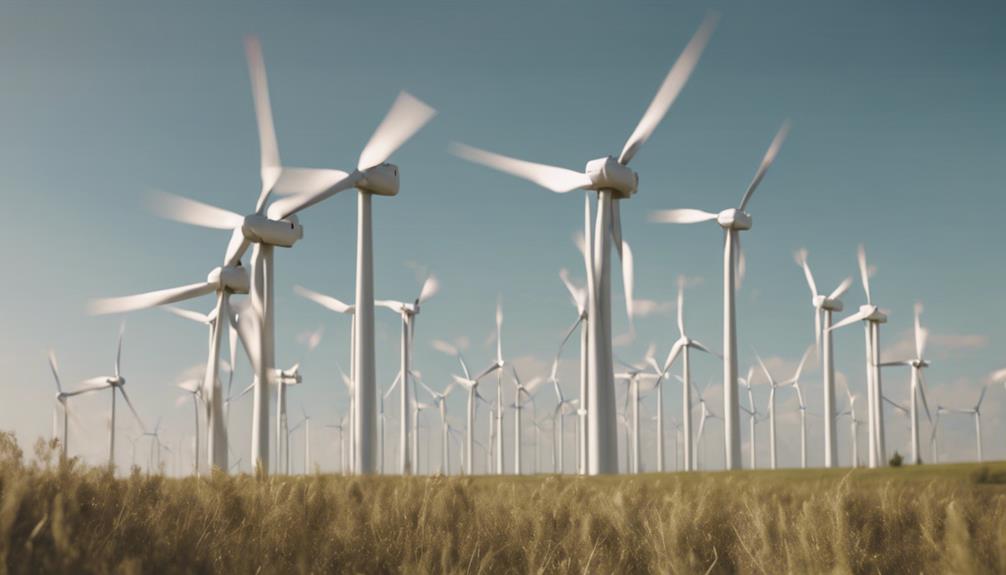
Considering the daily turns of a wind turbine, insights into energy generation can be gleaned from various operational and technological aspects. The number of times a turbine spins per day is essential for understanding its energy generation efficiency. Factors like wind speed, turbine design, and operational controls all contribute to the daily rotations, directly impacting the amount of energy produced. Higher wind speeds generally lead to more turns, resulting in increased energy generation.
Efficient turbine design plays a significant role in maximizing energy output from these rotations. By analyzing the daily spinning frequency, operators can assess the performance of wind energy systems and make adjustments to optimize energy generation. Turbine technology advancements and operational strategies are key in ensuring that wind turbines spin at an efficient rate to generate the maximum amount of energy effectively. Understanding these insights is crucial for enhancing the overall effectiveness of wind energy generation systems.
Wind Farm Functionality
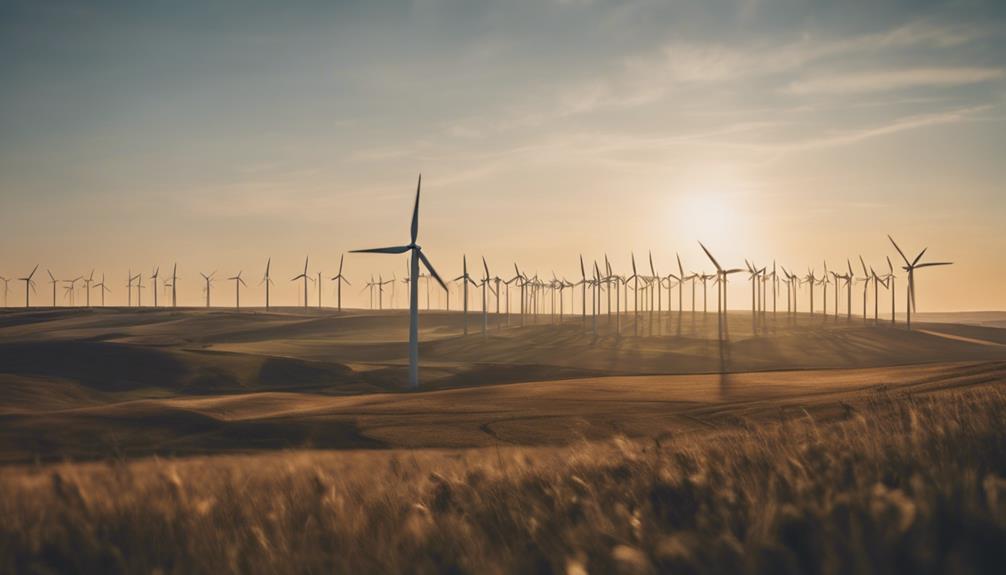
Wind farms operate by harnessing wind energy through multiple turbines working together. In understanding wind farm functionality, several key aspects come into play:
- Effective Electricity Generation: Wind farms consist of interconnected turbines strategically placed to maximize electricity production.
- Fine-Tuned Rotational Speed: The rotational speed of wind turbine blades is carefully adjusted to achieve peak efficiency based on wind conditions.
- Collaborative Energy Generation: Wind farms work collectively, with each turbine contributing to the overall electricity generation capacity.
- Continuous Monitoring: Wind farm operators closely monitor the daily rotations of turbines to ensure peak performance and maintenance.
- Environmental Impact: The functionality of wind farms significantly influences renewable energy generation and the reduction of carbon emissions.
Inside a Wind Turbine
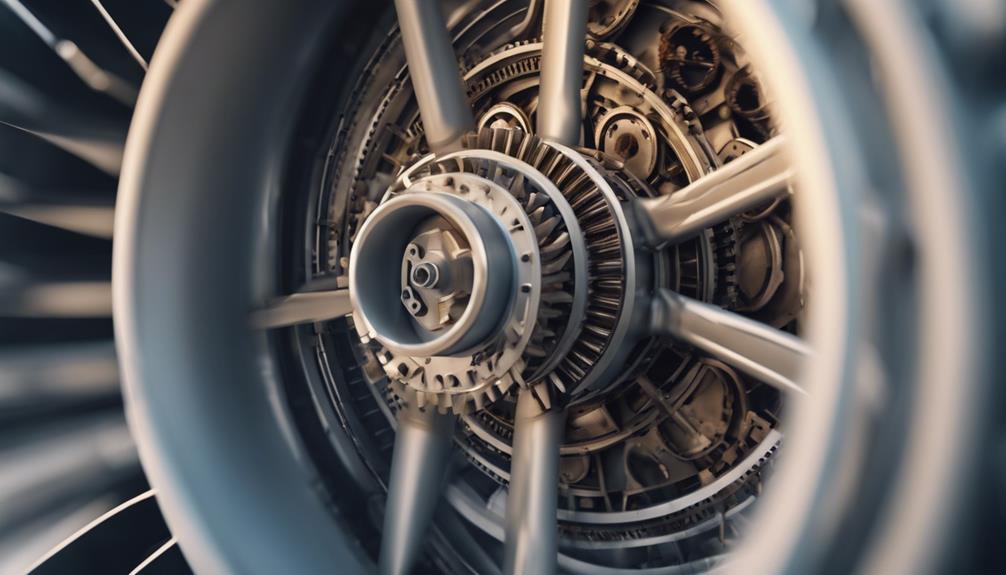
When you take a look inside a wind turbine, you'll notice the intricate design of the rotating blades. These blades are essential for capturing wind energy and converting it into rotational motion.
Additionally, the generator inside the turbine works to increase the output of electricity generated from the spinning motion of the blades.
Turbine Blade Rotation
Inside a wind turbine, the rotation of the turbine blades at speeds of 15 to 20 rpm is essential for generating electricity efficiently. The blade design, rpm, and other factors affect how effectively the wind turbine converts wind energy into electrical power.
Here are some vital points to take into account:
- Blade Speed: Turbine blades typically rotate at speeds of 15 to 20 rpm, maximizing energy production.
- Efficiency: The design of the turbine blades plays a pivotal role in capturing wind energy and converting it into rotational motion.
- Tip Speeds: Modern wind turbine blades can reach impressive tip speeds of up to 161.83 mph, enhancing energy generation.
- Rotation Frequency: A wind turbine spins about 25,200 times per day on average, showcasing the continual energy production process.
- External Factors: Wind speed and air density impact the rotation speed of the turbine blades, influencing overall power output.
Understanding these dynamics is key to optimizing wind turbine performance and harnessing renewable energy effectively.
Generator Output Increase
The increase in generator output inside a wind turbine directly correlates with rising wind speeds, resulting in elevated electricity production levels.
As the wind speed escalates, the rotational speed of the turbine blades increases, leading to a boost in generator output. The generator output is intricately linked to both the rotational speed of the blades and the wind speed.
When the wind speed hits the rated threshold, the generator reaches its maximum output capacity, generating electricity at its peak efficiency. This level of output is maintained until the wind speed reaches the cut-out threshold, at which point the turbine safeguards itself from excessive wind speeds.
Wind turbines are designed to fine-tune their blade speeds to optimize generator output and enhance energy production efficiency, ensuring that the turbine operates at its most effective level to harness the power of the wind.
Wind Turbine Construction
To understand the inner workings of a wind turbine, you'll explore the construction components found within its towering structure.
- The construction of wind turbines, reaching a height of 152m, was completed in December 2017.
- These turbines are strategically installed and connected to the grid to efficiently power approximately 161,300 homes.
- The grouping of these turbines forms what's known as wind farms, which play an essential role in sustainable energy production.
- Wind farms can be found both on land and offshore, harnessing the power of the wind to generate electricity.
- Understanding the construction of wind turbines provides insight into how they're designed to capture the wind's energy and convert it into the rotational motion that drives the generation of electricity.
Turbine Construction Details
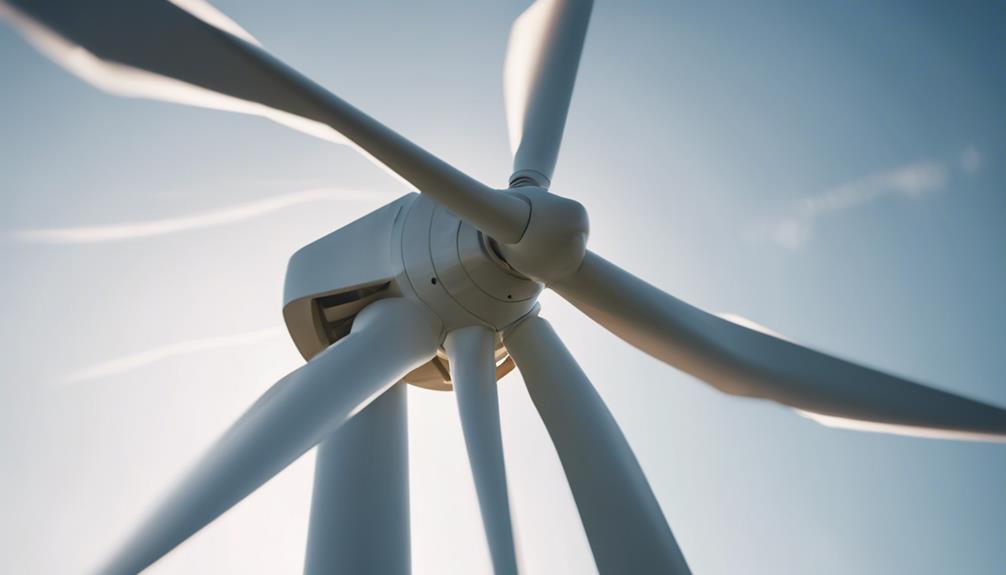
When constructing wind turbines, attention to design specifications and materials is vital for the best performance and longevity.
The blades on wind turbines rotate at speeds of 15-20 rotations per minute, guaranteeing efficient energy generation.
The size of the turbine also plays an essential role, with capacities typically ranging from 2.5-3MW, allowing them to produce over 6 million kilowatt-hours per year.
Wind turbines are designed to have a lifespan of 20-25 years, operating for up to 120,000 hours during their lifetime.
These turbines are often grouped together in wind farms, both on land and offshore, to harness wind power effectively for electricity generation.
Careful consideration of the construction details, including blade rotation speeds, rotations per minute, and turbine size, ensures that wind turbines can operate efficiently and reliably over their lifespan, contributing significantly to sustainable energy production.
Wind Turbine Efficiency Factors
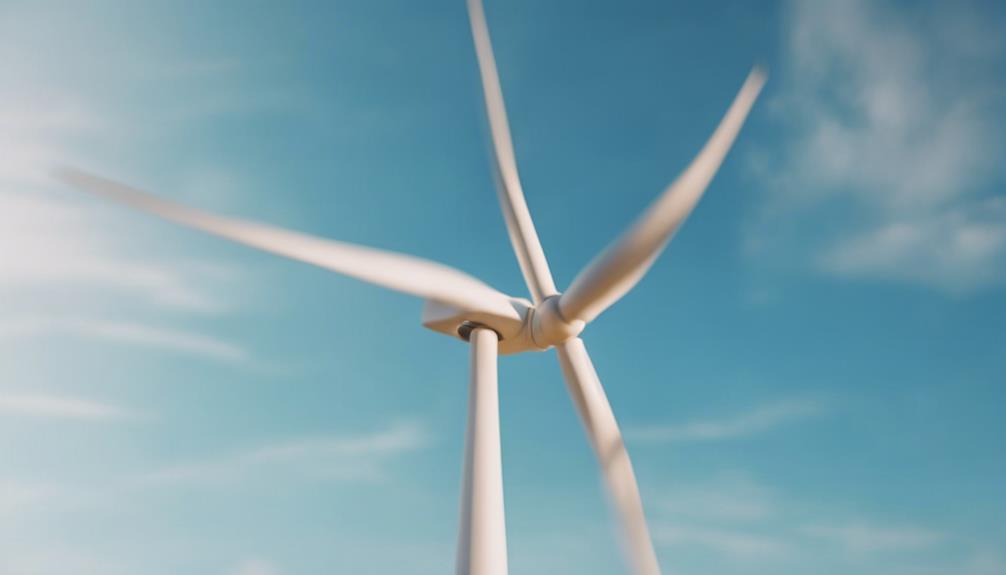
Constructing wind turbines with meticulous attention to design specifications and materials greatly impacts their effectiveness, influenced by factors such as design, location, wind speed, and maintenance practices.
To explore further into wind turbine efficiency factors, consider the following:
- Wind Speed: Higher wind speeds generally lead to increased turbine efficiency as more kinetic energy is available for conversion into electricity.
- Turbine Design: Modern turbine designs with aerodynamic blades and efficient components can significantly enhance overall efficiency.
- Location: Placing turbines in areas with consistent and strong winds improves their efficiency and electricity generation capabilities.
- Maintenance Practices: Regular maintenance checks, timely repairs, and lubrication help sustain optimal turbine performance and efficiency.
- Environmental Impact: Efficient turbines not only generate more electricity but also contribute to reducing carbon emissions and promoting sustainability.
Understanding and optimizing these factors are essential for maximizing wind turbine efficiency, increasing electricity generation, and advancing towards a cleaner energy future.
Frequently Asked Questions
How Many Times Does a Wind Turbine Spin?
When a wind turbine spins, it generates clean energy. Factors like wind speed and design influence its rotations. Turbine blades typically rotate 15 to 20 times per minute. Daily spins vary based on conditions and design.
How Much Does 1 Wind Turbine Produce per Day?
To determine how much electricity one wind turbine generates daily, consider factors like wind speed and turbine efficiency. A turbine can produce up to 48 MWh per day. Higher rotations mean more power output.
How Many Hours a Day Do Wind Turbines Operate?
Operating 24 hours a day, wind turbines work tirelessly generating electricity. Various factors like wind speed and design influence their daily operation. You'll find them spinning constantly, contributing to their energy efficiency.
How Much Does a Wind Turbine Make per Spin?
When you wonder how much a wind turbine makes per spin, it's important to take into account factors like wind speed and turbine efficiency. Each rotation contributes to electricity generation, impacting the overall output and financial returns.
Does the Rotation of a Wind Turbine Depend on the Amount of Wind?
Yes, the rotation of a wind turbine does depend on the amount of wind. When there is a higher wind speed, the blades spin faster, leading to an increase in wind turbine power output. Conversely, lower wind speeds result in slower rotation and lower power generation.
Conclusion
So, now you know how many times a wind turbine spins per day!
With all the factors influencing turbine speed and energy generation insights, it's clear that these majestic machines work hard to harness the power of the wind.
Just like a dance partner gracefully spinning across the floor, wind turbines elegantly twirl thousands of times daily, creating clean and renewable energy for a brighter future.
